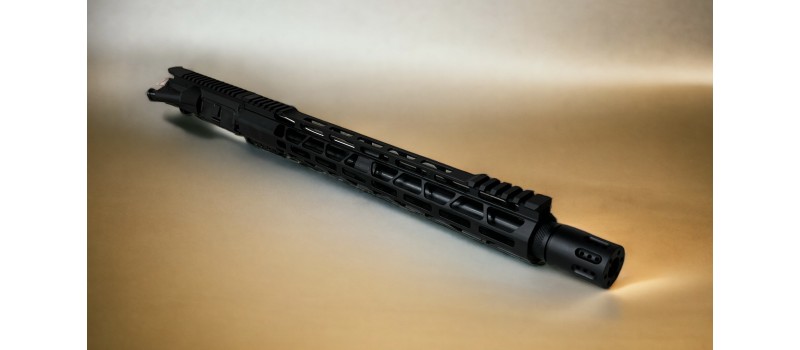5.45x39, also known as the "poison bullet," has a controversial history that has piqued the interest of many firearms enthusiasts. This relatively cheap 5.45x39 ammo has gained a notorious reputation for its lethal effects on the human body, earning it the nickname "poison bullet." But where did this name come from? And what makes this bullet so deadly? In this blog post, we will unpack the origins of the poison bullet and delve into the reasons behind its infamy. So, let's take a closer look at the 5.45x39 and discover the truth behind its infamous reputation.
Understanding the 5.45x39 Ammunition
The 5.45x39 ammunition is a type of cartridge that has gained significant attention in the firearms community. To fully understand this ammunition, it's essential to compare it to other popular cartridges like the 7.62x39 and the 5.56.
When comparing the 5.45x39 to the 7.62x39, one notable difference is the size. The 5.45x39 is slightly smaller in diameter, measuring at 5.45mm compared to the 7.62mm of the 7.62x39. This size difference affects the ballistic performance of the bullet, as the smaller size results in higher muzzle velocity and better long-range accuracy.
Additionally, the 5.45x39 differs from the widely used 5.56 in terms of its design and ballistics. While the 5.56 has become a standard round for NATO forces, the 5.45x39 offers distinct advantages. The 5.45x39 bullet is designed with a tapered shape, allowing for improved aerodynamics and penetration capabilities.
The 5.45x39 ammunition's unique characteristics make it an appealing choice for many firearm enthusiasts. Its higher velocity, long-range accuracy, and penetration capabilities contribute to its growing popularity. However, it's important to note that ammunition selection should always consider the intended purpose and legal considerations.
The Intriguing History of the 5.45x39 'Poison Bullet'
The history of the 5.45x39 'poison bullet' is a fascinating one, filled with intrigue and controversy. Introduced in the late 1970s by the Soviet Union, this ammunition was designed specifically for the AK-74 rifle, as a successor to the larger and heavier 7.62x39 round used in the AK-47. The decision to develop the 5.45x39 ammunition came in response to the effectiveness of the American 5.56 NATO round during the Vietnam War.
The 5.45x39 round was created with a specific purpose in mind – to wound rather than kill. This strategy aimed to increase the logistical burden on the enemy, as a wounded soldier requires more resources to treat and evacuate compared to a dead one. The bullet's design was optimized for this purpose, featuring a hollow space in the tip that was filled with a corrosive chemical. When the bullet struck its target, the chemical would be released, causing significant tissue damage and infection.
This intention to wound rather than kill gave rise to the nickname "poison bullet." The 5.45x39 ammunition quickly gained notoriety for its devastating effects on the human body, leading to widespread condemnation from human rights organizations.
What Earns 5.45x39 its 'Poison Bullet' Nickname?
What exactly earns the 5.45x39 its notorious nickname, the "poison bullet"? Well, it's a combination of factors that sets this ammunition apart.
First, let's compare it to its larger counterpart, the 7.62x39. The 5.45x39 is slightly smaller in diameter, measuring at 5.45mm compared to the 7.62mm. This size difference has a significant impact on the bullet's performance. The smaller size allows for higher muzzle velocity, meaning the bullet travels faster. This increased velocity, combined with the 5.45x39's unique design, enhances its penetration capabilities and damage potential.
Next, let's look at the 5.45x39 in comparison to the popular 5.56 round. While the 5.56 has become a standard for NATO forces, the 5.45x39 offers distinct advantages. The bullet's tapered shape improves aerodynamics, resulting in better long-range accuracy. Additionally, the hollow space in the tip of the 5.45x39 bullet, filled with a corrosive chemical, adds to its lethal nature.
The combination of smaller size, higher velocity, improved penetration, and the added chemical component makes the 5.45x39 an extremely lethal round. These factors, coupled with the intentional strategy to wound rather than kill, are what earned it the infamous moniker, the "poison bullet."
Characteristics and Impact of the 'Poison Bullet'
The 5.45x39 'poison bullet' is not just known for its name; it also possesses several unique characteristics that contribute to its impact. One significant difference lies in its comparison to the 7.62x39 round. The 5.45x39 is slightly smaller in diameter, measuring at 5.45mm compared to the 7.62mm. This size difference allows for higher muzzle velocity, meaning the bullet travels faster, resulting in increased penetration capabilities and damage potential.
When comparing the 5.45x39 to the popular 5.56 round, another distinctive characteristic becomes apparent. The bullet's tapered shape not only improves aerodynamics but also enhances long-range accuracy. Additionally, the hollow space in the tip, filled with a corrosive chemical, adds to the bullet's lethality upon impact.
These combined features of the 5.45x39, including its smaller size, higher velocity, improved penetration, and chemical component, make it an extremely lethal round. The intentional strategy to wound rather than kill, coupled with these characteristics, underscores the infamy of the 'poison bullet.'
The impact of the 5.45x39 ammunition, both physically and reputationally, cannot be ignored. Its unique design and lethal capabilities have made it a subject of interest and controversy among firearms enthusiasts and human rights organizations alike.
Applications and Usage of the 5.45x39
The 5.45x39 ammunition, also known as the "poison bullet," has gained significant attention in the firearms community for its unique characteristics and lethal effects. Its applications and usage span across various contexts, including military and civilian settings.
In military applications, the 5.45x39 is primarily used in rifles such as the AK-74 and its variants. Its smaller size, compared to the 7.62x39, allows for increased magazine capacity and reduced weight, making it an ideal choice for soldiers carrying multiple rounds. The high muzzle velocity and improved long-range accuracy of the 5.45x39 also contribute to its effectiveness on the battlefield.
In civilian contexts, the 5.45x39 is popular among firearm enthusiasts for target shooting and competitions. Its unique design and ballistics make it a favorite among long-range shooters, as it offers excellent accuracy and precision. Additionally, its affordability compared to other cartridges, such as the 5.56, makes it an attractive option for recreational shooting.
However, it's important to note that the legality of the 5.45x39 ammunition may vary depending on the jurisdiction. Some countries or states may have restrictions on its possession or use, so it's essential to research and adhere to local laws and regulations.
Overall, the 5.45x39 ammunition finds applications in both military and civilian contexts, offering unique characteristics that cater to different needs. Its lethal reputation and widespread usage continue to make it a subject of interest and controversy in the firearms community.
The Legality and Controversy Surrounding the 5.45x39
The legality and controversy surrounding the 5.45x39 ammunition have been subjects of intense debate within the firearms community. While the 5.45x39 is widely available in many countries, its possession and use may be subject to certain restrictions in others. These restrictions primarily stem from concerns over its lethality and potential for misuse.
One aspect of the controversy revolves around the bullet's purposeful design to wound rather than kill. This strategy, intended to increase the logistical burden on the enemy, has faced criticism from human rights organizations who argue that it violates the laws of war.
Additionally, comparisons between the 5.45x39 and other popular cartridges, such as the 7.62x39 and the 5.56, have further fueled the controversy. Advocates for the 7.62x39 argue that it offers greater stopping power, while proponents of the 5.45x39 argue for its improved ballistics and accuracy.
The legality and controversy surrounding the 5.45x39 reflect the broader ethical and legal considerations surrounding firearms and their ammunition. As with any weapon, it is important for individuals to familiarize themselves with their local laws and regulations to ensure responsible and legal usage.






